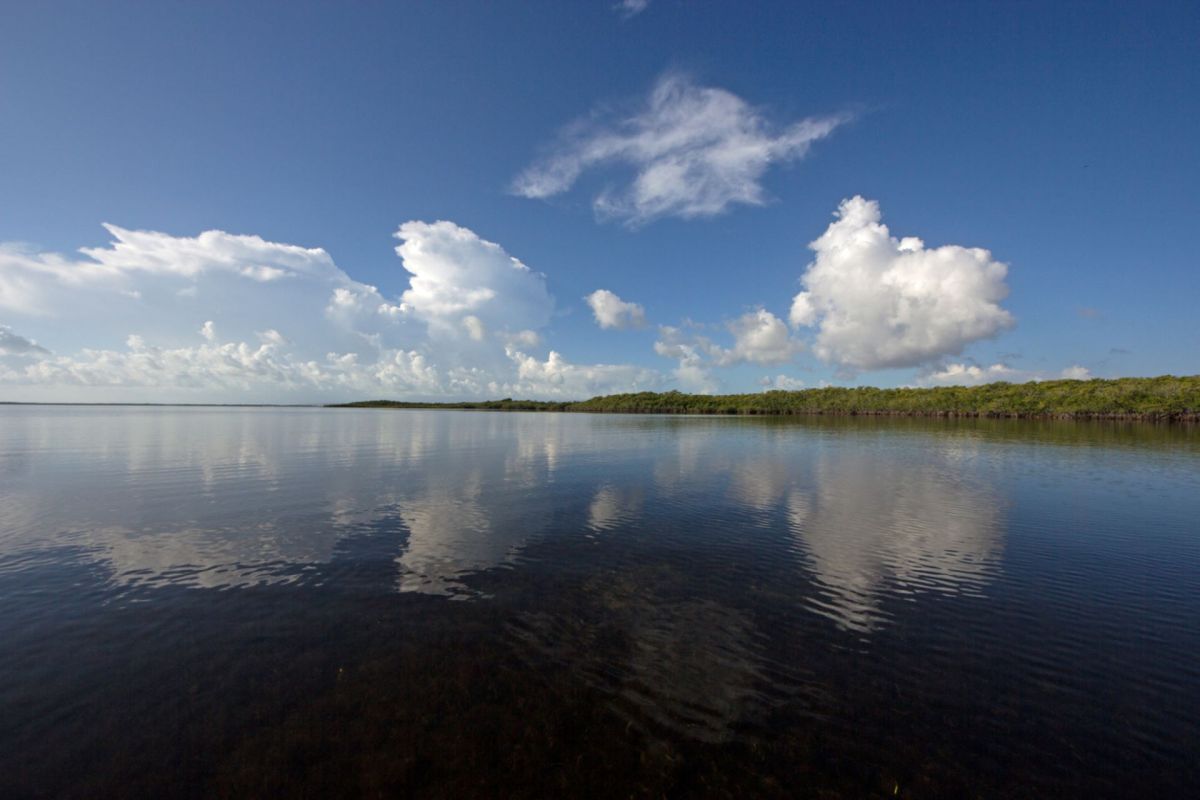Toxic "forever chemicals" called PFAS are found in a shocking range of products worldwide. They're even found in worryingly high levels in human blood, where they are likely to contribute to cancer, birth defects, and kidney disease.
Now, a new study has traced how they move through the ocean, as covered in an essay by two of the study's scientists published by Scientific American — and has uncovered damning evidence of the sources of this dangerous pollution.
What happened?
Environmental analytical chemists at Florida International University's Institute of the Environment used water samples from different locations and depths in Biscayne Bay to trace the path of PFAS moving through the water. They quickly identified the source of the contamination: the exits of urban canals, including the Miami River, Little River, and Biscayne Canal.
They tracked the pollution as it flowed through the bay, finding that the concentration was six times higher in surface water than it was 13 feet or more below the surface.
They also identified the types of PFAS in the water to narrow down the potential sources.
They found that one major source was likely sewage contamination, because of the presence of PFAS used as stain and grease repellents in household products and food packaging. Another major contributor was military and airport facilities, which have been involved in PFAS pollution before.
"We believe there is a need for federal and state agencies to develop guidelines and implement action plans to protect people and the aquatic life in Biscayne Bay," the study's scientists, Olutobi Daniel Ogunbiyi and Natalia Soares Quinete, wrote in their essay.
Why does it matter?
Scientific American explains that when PFAS enter the environment, they stay without breaking down for an incredibly long time, which is why they're called forever chemicals. They also tend to build up in living things.
"Because PFAS can enter the food chain and accumulate in marine plants and animals, including fish that humans eat, the spread of these chemicals has ecological and human health implications," said the researchers in the statement of their findings.
Since the concentration was highest near the surface of the water, surface-dwelling fish are likely to be most affected. Those include mackerel, tuna, and mahi-mahi, all of which are popular seafood options. The more pollution those fish are exposed to, the more PFAS people will be swallowing with their fish dinners.
What can we do about the PFAS pollution?
The best way to reduce PFAS in the environment is by using fewer of these products at home. As Scientific American points out, that includes nonstick pots and pans, fast food and popcorn packaging, water-resistant clothing and cosmetics, and stain-resistant textiles like carpets.
Scientists are also working on ways to destroy or break down PFAS into harmless components instead of remaining as truly "forever chemicals," but the research is ongoing.
Join our free newsletter for weekly updates on the coolest innovations improving our lives and saving our planet.









